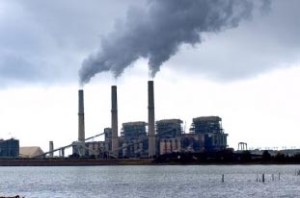Instead of taking action to clean Texas air, as requested by the Dallas County Medical Society, Texas Commission on Environmental Quality (TCEQ) Chairman Bryan Shaw and Commissioner Toby Baker voted today to deny the petition for rulemaking and further postpone needed air quality improvements for East Texas and the Dallas-Fort Worth areas.
The DFW area has struggled with unhealthy levels of ground-level ozone pollution – caused emissions from vehicles and power plants mixing in the sunlight – for decades. While improvements in air quality have been made, they have lagged behind tightening air quality standards set by EPA to protect public health. Asthma rates – particularly among children – have continued to rise, as well as hospitalizations due to asthma.

In addition to contributing to ozone problems in East Texas & the DFW area, Luminant’s Martin Lake coal plant emits more toxic mercury than any other power plant in the nation, ranks 5th in carbon dioxide emissions & is responsible for $328,565,000 in health impacts from fine particle emissions.
Meanwhile, Luminant continues to operate three coal-fired power plants with a total of eight generating units in East Texas that were build in the 1970’s. These outdated facilities emit nitrogen oxides (NOx) – which is one of the two ingredients in ozone creation – at twice the rate of new coal plants in Texas. The rule changes recommended by the Dallas County Medical Society would have required those old coal plants to meet the same standards as new coal plants by 2018 – giving the plant owners more than ample time to make the upgrades or arrange to retire the facilities.
Instead of focusing on whether or not reducing NOx emissions from those old coal plants in East Texas would lead to reductions in ground-level ozone in the DFW area, the Commissioners persisted in questioning the science that shows that exposure to ground-level ozone results in increased and worsened incidents of asthma. Never mind that the research has been vetted by the EPA and reaffirmed by health organizations including the American Lung Association. The mindset at TCEQ, as at many of our agencies and with far too many of our elected officials, is that Texas knows best and industry must be protected at all costs.
We appreciate the more than 1,400 Public Citizen supporters who signed our petition in support of reducing emissions and protecting public health. All of those comments were submitted into the record and I read a few of them allowed at today’s hearing.
We will continue to fight for healthy air as TCEQ moves forward with developing a updated State Implementation Plan (SIP) to bring the DFW area into attainment with ground-level ozone air quality standards. That process will be ongoing in 2014, so stay tuned.


